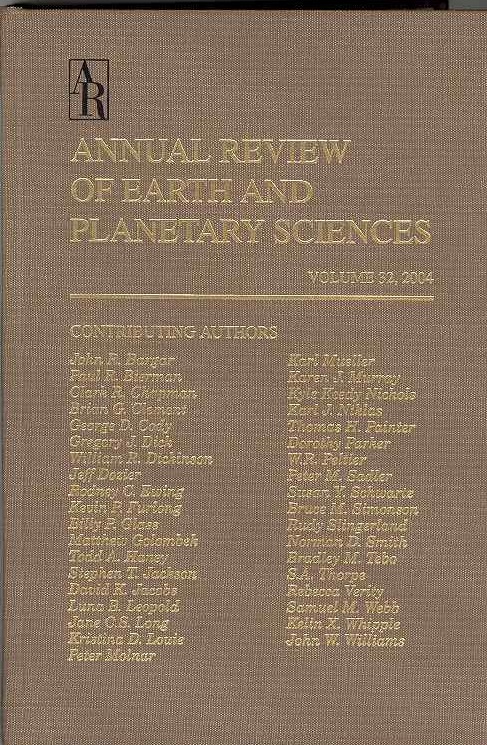Olivine-Hosted Melt Inclusions: A Microscopic Perspective on a Complex Magmatic World
IF 11.3
1区 地球科学
Q1 ASTRONOMY & ASTROPHYSICS
Annual Review of Earth and Planetary Sciences
Pub Date : 2021-01-19
DOI:10.1146/ANNUREV-EARTH-082420-060506
引用次数: 21
Abstract
Inclusions of basaltic melt trapped inside of olivine phenocrysts during igneous crystallization provide a rich, crystal-scale record of magmatic processes ranging from mantle melting to ascent, eruption, and quenching of magma during volcanic eruptions. Melt inclusions are particularly valuable for retaining information on volatiles such as H2O and CO2 that are normally lost by vesiculation and degassing as magma ascends and erupts. However, the record preserved in melt inclusions can be variably obscured by postentrapment processes, and thus melt inclusion research requires careful evaluation of the effects of such processes. Here we review processes by which melt inclusions are trapped and modified after trapping, describe new opportunities for studying the rates of magmatic and volcanic processes over a range of timescales using the kinetics of post-trapping processes, and describe recent developments in the use of volatile contents of melt inclusions to improve our understanding of how volcanoes work. ▪ Inclusions of silicate melt (magma) trapped inside of crystals formed by magma crystallization provide a rich, detailed record of what happens beneath volcanoes. ▪ These inclusions record information ranging from how magma forms deep inside Earth to its final hours as it ascends to the surface and erupts. ▪ The melt inclusion record, however, is complex and hazy because of many processes that modify the inclusions after they become trapped in crystals. ▪ Melt inclusions provide a primary archive of dissolved gases in magma, which are the key ingredients that make volcanoes erupt explosively. Expected final online publication date for the Annual Review of Earth and Planetary Sciences, Volume 49 is May 2021. Please see http://www.annualreviews.org/page/journal/pubdates for revised estimates.含橄榄石的熔体包裹体:一个复杂岩浆世界的微观视角
在火成岩结晶过程中,被困在橄榄石斑晶中的玄武岩熔体包裹体提供了丰富的、晶体尺度的岩浆过程记录,从地幔熔融到火山喷发期间岩浆的上升、喷发和熄灭。熔体包裹体对于保存水和二氧化碳等挥发物的信息尤其有价值,这些挥发物通常会在岩浆上升和喷发时因起泡和脱气而丢失。然而,保存在熔体包裹体中的记录可能会因包裹后的过程而变得模糊,因此熔体包裹体研究需要仔细评估这些过程的影响。在这里,我们回顾了熔体包裹体被捕获和捕获后修改的过程,描述了利用捕获后过程的动力学来研究岩浆和火山过程在一定时间尺度上的速率的新机会,并描述了利用熔体包裹体挥发性含量来提高我们对火山如何工作的理解的最新进展。■硅酸盐熔体(岩浆)包裹体被困在岩浆结晶形成的晶体中,为火山下面发生的事情提供了丰富、详细的记录。这些内含物记录了从岩浆如何在地球深处形成,到它上升到地表并喷发的最后几个小时的信息。然而,熔体包裹体的记录是复杂而模糊的,因为在包裹体被困在晶体中之后,有许多过程对它们进行了修饰。熔融包裹体提供了岩浆中溶解气体的原始档案,这些气体是火山爆发的关键成分。《地球与行星科学年度评论》第49卷的最终在线出版日期预计为2021年5月。修订后的估计数请参阅http://www.annualreviews.org/page/journal/pubdates。
本文章由计算机程序翻译,如有差异,请以英文原文为准。
求助全文
约1分钟内获得全文
求助全文
来源期刊

Annual Review of Earth and Planetary Sciences
地学天文-地球科学综合
CiteScore
25.10
自引率
0.00%
发文量
25
期刊介绍:
Since its establishment in 1973, the Annual Review of Earth and Planetary Sciences has been dedicated to providing comprehensive coverage of advancements in the field. This esteemed publication examines various aspects of earth and planetary sciences, encompassing climate, environment, geological hazards, planet formation, and the evolution of life. To ensure wider accessibility, the latest volume of the journal has transitioned from a gated model to open access through the Subscribe to Open program by Annual Reviews. Consequently, all articles published in this volume are now available under the Creative Commons Attribution (CC BY) license.
 求助内容:
求助内容: 应助结果提醒方式:
应助结果提醒方式:


